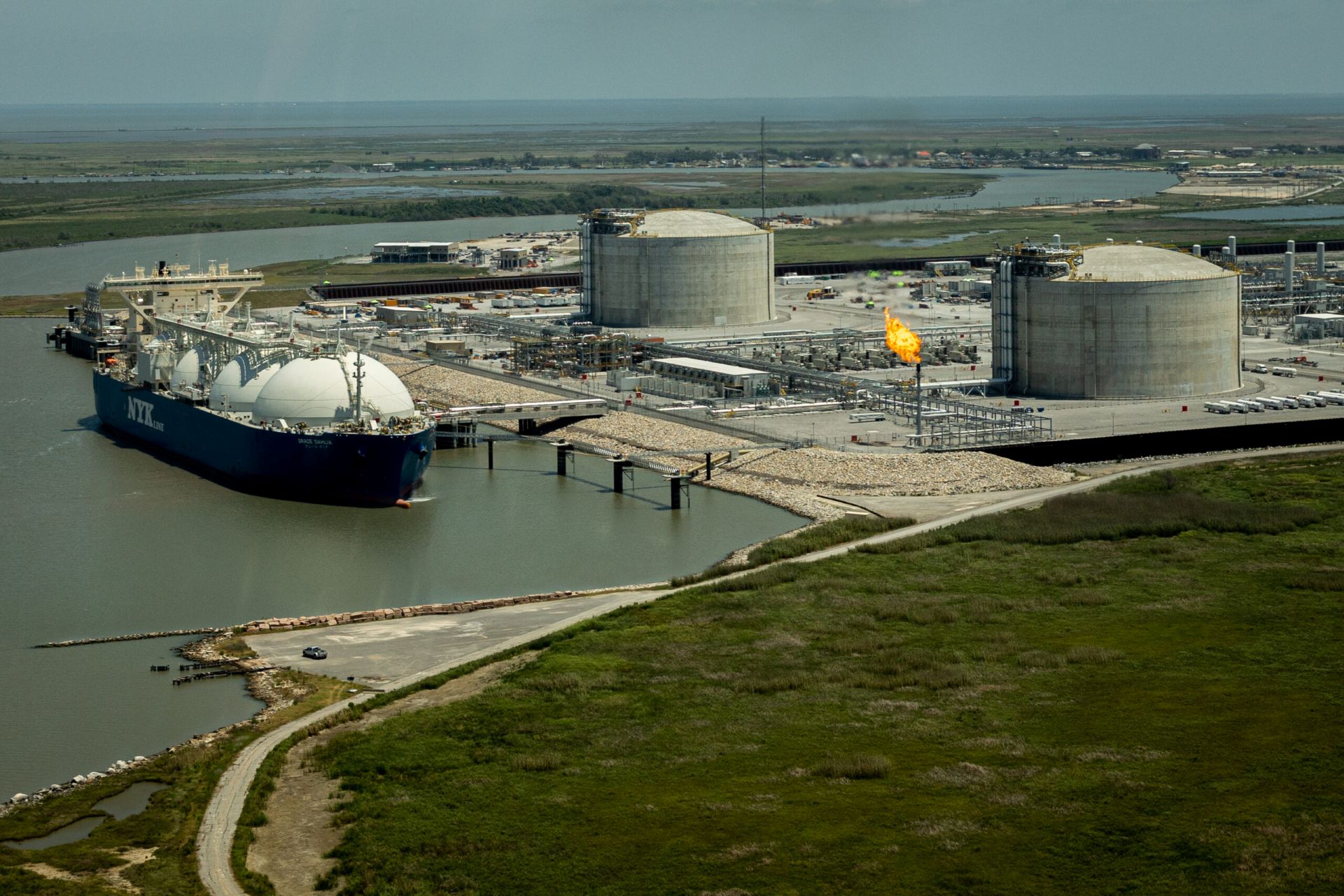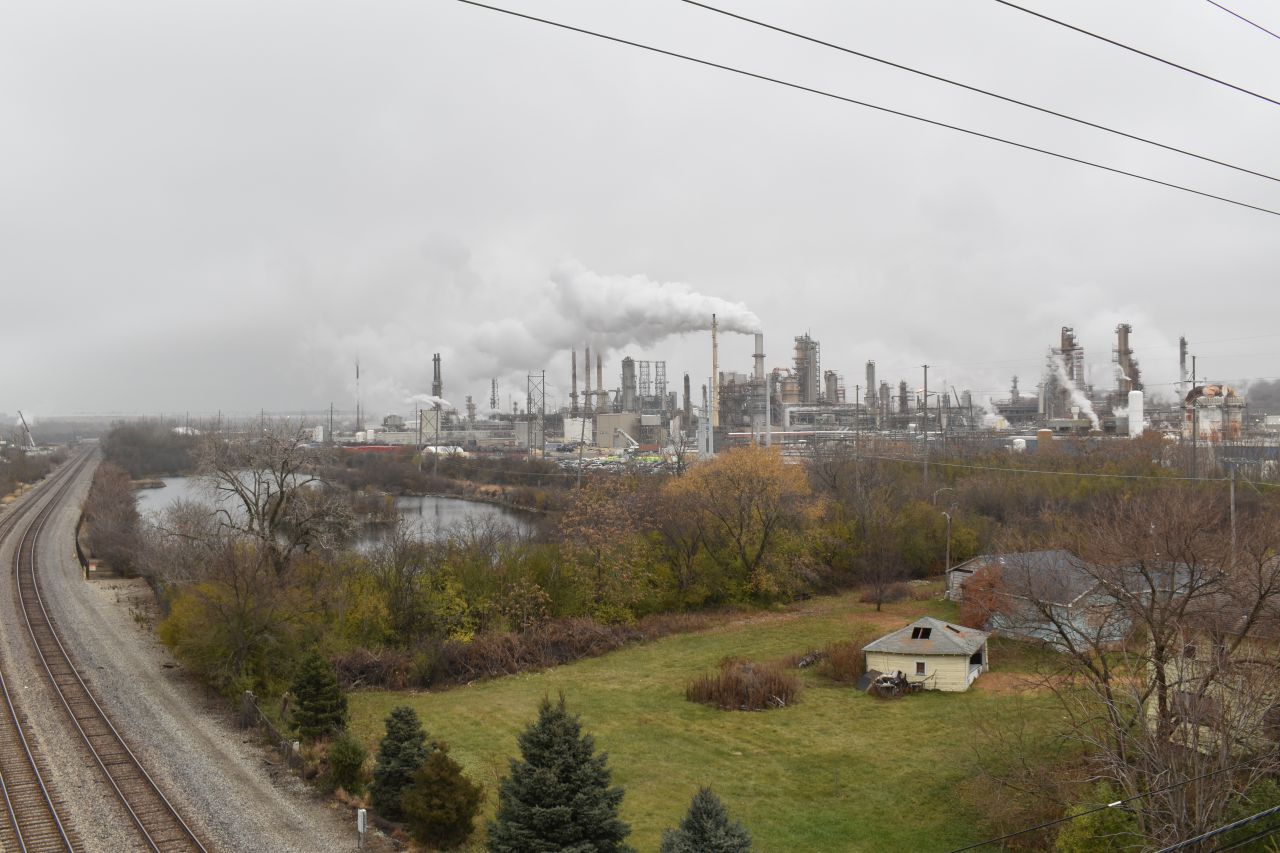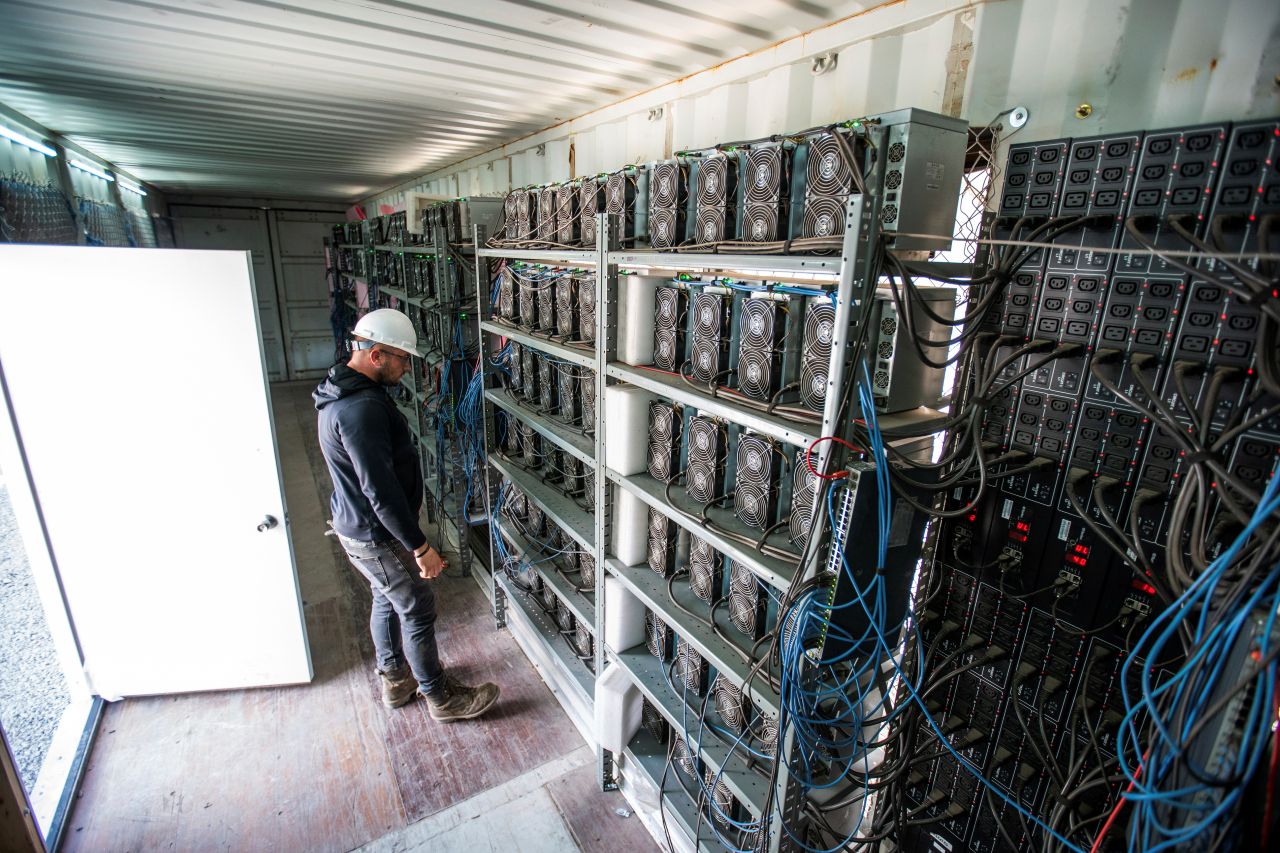All U.S. LNG terminals active in 2024 violated air pollution limits over last 5 years

Since Venture Global opened its Calcasieu Pass LNG terminal near the mouth of Louisiana’s Calcasieu River in 2022, the facility’s neighbor, John Allaire, has had to live with its pollution.
Flames roar from the flares and plumes of inky smoke streak across the sky from the terminal that exports fracked liquefied natural gas (LNG) to other countries. The noise and pollution have shattered the peace for Allaire, a former oil and gas engineer who owns a home near the terminal.
“Frequently they flare, sometimes with black smoke; and sometimes I can hear the plant’s alarms, all the way over here,” said Allaire, standing outside his home across the Calcasieu River from the LNG terminal.
Calcasieu Pass LNG spent 12 quarters during the last three years out of compliance with federal Clean Air Act regulations and has been the subject of two enforcement orders, according to state records.
These violations are part of a larger pattern of failure to comply with environmental laws at U.S. LNG terminals, according to “Terminal Trouble,” a new report released this week by the Environmental Integrity Project (EIP).
All seven of the LNG export terminals that were fully operational at the end of 2024 violated the Clean Air Act at least once over the last five years, the group found, using records from state and federal agencies. The seven LNG export terminals that were operating in 2023 reported releasing 18.2 million tons of greenhouse gases that year, which is as much climate-warming pollution as 3.9 million cars and trucks driven for a year, and 15,733 tons of health-damaging “criteria” air pollutants, including nitrogen oxides and sulfur dioxide.
Pollution from LNG export terminals is only expected to rise as the industry expands. In the first six months of President Donald Trump’s second term, LNG companies in the U.S. announced proposals to build two new export terminals and expand three more along the Gulf Coast. This would expand the nation’s capacity to ship LNG abroad by 38 percent.
Those new projects are on top of four new LNG terminals and an expansion already under construction – in Texas, Louisiana, and Georgia – and 23 additional projects planned before Trump took office. If all 33 projects are built, U.S. LNG exports could triple over the next decade.
LNG terminals routinely report accidents and “upsets” – including chemical releases, fires, explosions, and excessive flaring – that threaten the health and quality of life of local residents. The five LNG export terminals operating along the Texas and Louisiana Gulf Coast have reported at least 425 of these kinds of emission incidents that released over 14,155 tons of air pollution since they began operating, EIP’s report found.
The penalties for air violations are often minor compared to the significance of the violations, the maximum penalties allowed by law, and the multi-billion dollar companies involved. States and EPA have issued 15 enforcement actions that have resulted in about $1 million in penalties for Clean Air Act violations in the past five years.
Of all the violations EIP analyzed, the highest penalty – $669,604 – went to Freeport LNG southwest of Houston. On June 8, 2022, an explosion at the facility launched a giant fireball into the sky, frightened local residents, and forced the facility’s shutdown for eight months.
The Texas Commission on Environmental Quality (TCEQ) and the EPA issued two enforcement orders and $493,804 in penalties to address violations associated with the explosion. These were among a total of seven enforcement orders and $669,604 in penalties imposed on Freeport LNG over the last five years. Freeport LNG also in February agreed to pay a $1.5 million fine after inspections by the federal Pipeline and Hazardous Materials Safety Administration uncovered safety violations in the wake of the explosion.
Cameron Parish in Southwest Louisiana hosts three of the seven currently operating terminals – Sabine Pass LNG, Cameron LNG, and Calcasieu Pass LNG. Six new terminals, each the size of a small town, are being planned along the Calcasieu River.

Immediately next to Allaire's home, a company called Commonwealth LNG is now planning to build another massive LNG terminal, with stacks and tanks that will overshadow his home and drown out the sounds of waves and shore birds.
“My kids grew up here. It was great back then,” he said, looking across the marsh grasses, past the wreck of a shrimp boat, with the LNG terminal’s fuel tanks looming in the distance. “I wanted my kids to be able to hunt and fish here. This is where I planned to have my ashes scattered. But LNG is screwing all that up. The habitat here is being destroyed.”
A judge on October 10 cancelled a coastal use permit for the Commonwealth LNG project. But the company pledged to apply for the permit again and keep the project moving forward, saying it is “working with our state officials and regulators to resolve this matter as quickly as possible.”
This part of the western Louisiana Gulf Coast was once defined by shrimping, fishing, and oyster harvesting. But for professional shrimpers living in Cameron, the sudden industrialization of the landscape – including dredging, construction, the bulldozing of wetlands, and massive LNG tankers making wakes up the river – has disrupted the ability of families to earn a living and continue their fishing traditions.
Anthony Theriot, a 50-year-old shrimper who lives in Cameron, said that over the last three years, since the Calcasieu Pass LNG terminal opened, the number of shrimp boats operating in his town has plummeted from about 40 boats to 20.
“The last four years have been the worst four years of my fishing career. My catch has gone down by more than half,” Theriot said. “Most of us who are making a living now have to shrimp elsewhere.”
Sky Leger, a 43-year-old shrimper who also works the Calcasieu River, said: “In so many words, they are just pushing us out – bullying us. The end result is going to be the complete elimination of commercial fishing in Cameron, Louisiana.”
In September, local fishermen raised concerns about how Venture Global’s dredging to make room for bigger tankers to access its CP2 LNG terminal was affecting nearby waterways. Dredged mud from the ship channel leading to the terminal was supposed to be confined to a placement area near a wildlife refuge, but residents found that mud was making its way into a nearby bayou and Calcasieu Lake.
Water pollution from LNG terminals has led to violation notices, but no penalties so far. Of the seven operating LNG terminals in the U.S. at the end of 2024, five have exceeded their water pollution control permits at least once over the last five years, according to the Environmental Protection Agency’s Enforcement and Compliance History Online database.
On the campaign trail, Trump promised the oil and gas industry that he would roll back environmental protections in exchange for $1 billion in campaign contributions. And, on his first day in office, he signed an executive order to “unleash” American energy and remove regulatory barriers to fossil fuel development.
On Inauguration Day, President Trump ordered the Department of Energy, the federal agency responsible for authorizing LNG exports, to resume processing LNG export applications “as expeditiously as possible” after a pause during the Biden Administration. By August, the department had finalized eight LNG-related actions, including export authorizations for LNG projects, an order to remove barriers for the use of LNG as fuel, and the rescission of a Biden-era policy that required companies to meet certain criteria to extend construction deadlines. The Federal Energy Regulatory Commission and the Maritime Administration, the two federal agencies responsible for authorizing construction of LNG export terminals, have finalized at least 10 LNG-related actions to build new facilities and expand capacity over the same time period.
James Hiatt, Executive Director of For a Better Bayou in Louisiana, said that the LNG industry’s poor environmental track record means that the federal and state government should start denying permits for new LNG terminals, not accelerating their approval.
“Instead of rewarding these repeat violators with more permits, regulators should follow their mandate and enforce the law, hold them accountable, and protect the people whose lives and livelihoods are being destroyed,” Hiatt said.
Lead photo: Aerial photo of the Calcasieu Pass LNG terminal in Cameron Parish, Louisiana. Photo by Carlos Silva of for the Louisiana Bucket Brigade.















